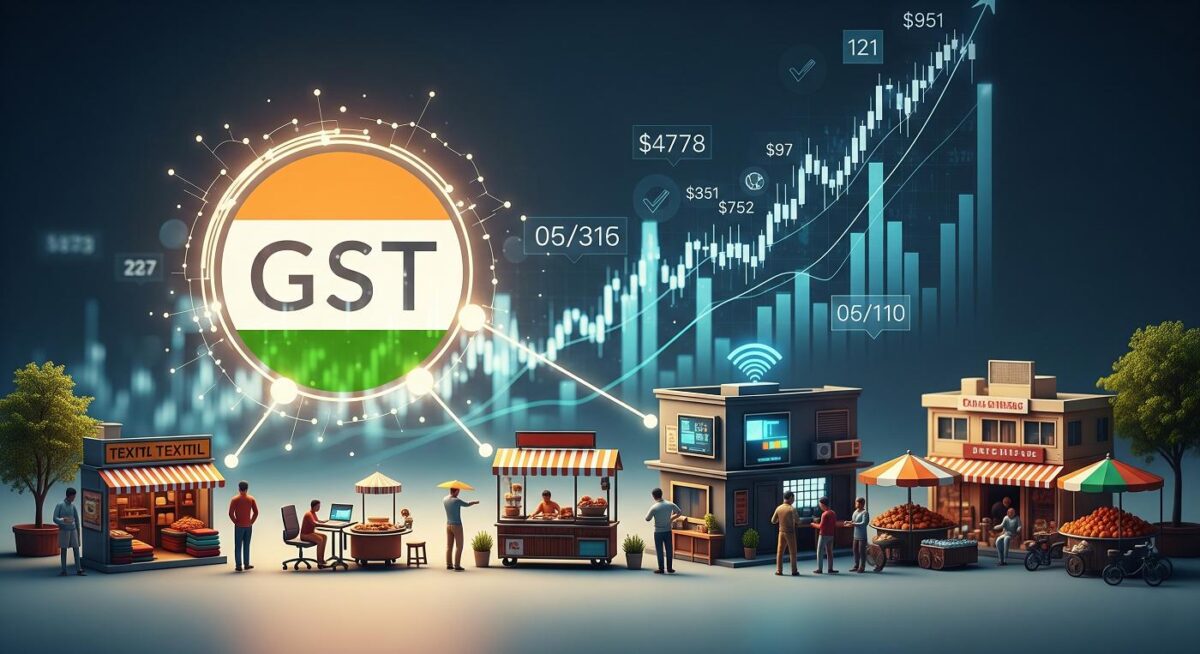GST reforms in 2025 have won the support of 85% of Indian businesses, according to recent feedback from trade associations and industry surveys. The sweeping changes—including simplified return filing, early refunds, staged rate reductions, and automated reconciliation—are transforming the business landscape. These GST reforms benefits are not just boosting compliance; they’re driving market confidence, enhancing liquidity, and paving the way for robust growth across sectors—from manufacturing and retail to services and exports.
What Are the Key GST Reforms Driving Business Support?
Here’s why so many businesses are rallying behind the GST revamp:
1. Simplified Return Filing System
A uniform, real-time return filing system reduces paperwork and the need for monthly reconciliations. Businesses can now file a single, simplified return covering both inward and outward supplies.
2. Faster Input Tax Credit & Refunds
Advance processing of input tax credits and automated refunds—especially for exports and MSMEs—improves cash flow significantly, helping smaller players invest more confidently.
3. Staged GST Rate Rationalization
The restructured GST slabs (e.g., reducing 28% items and merging certain 5% and 12% slabs) mean lower input costs, especially in consumer goods and auto sectors.
4. Pre-Filled Invoices & E-Invoicing Integration
Itemised invoices generate automatically through e-invoicing and are available as pre-filled data in the next return—saving hours on data entry.
5. Single Window Compliance Dashboard
A unified dashboard now lets businesses manage GST returns, payments, demand notices, audit notices, and compliance tasks from one place.
6. GST Mobile App for On-the-Go Filing
Mobile GST app enhancements allow small retailers and service providers to file returns, check refunds, and update invoices from their phones—driving deeper formalization.
Market Impact—How GST Reforms Are Shaping India’s Business Landscape
Boost in Business Confidence & Investment
With predictable cash flow and clearer compliance paths, MSMEs and large firms are ramping up capital expenditure—especially in machinery, retail expansion, and distribution infrastructure.
Stabilizing Consumer Goods Prices
Lower GST rates on essentials and tax rationalization on appliances and vehicles have reduced retail prices, boosting consumer demand at a time when inflationary pressures remain in play.
IPO & Equity Markets Seeing Positive Ripples
Mid-cap companies and export-linked firms benefiting from GST refunds and improved margins are seeing their valuations rise—translating to positive investor sentiment on equity markets and IPO activity.
Banking & NBFC Gains
Faster credit cycles (thanks to quicker refunds) are leading to healthier cash flows for MSMEs and formal businesses, reducing their credit risk and improving loan performance for banks and NBFCs.
Logistics, Warehousing & E-Commerce Get a Lift
Streamlined returns and standardized GST rates allow logistics players to optimize pan-India distribution, resulting in faster deliveries and cost savings for e-commerce platforms and their sellers.
Business Voices—Why Companies Are More Optimistic
- MSMEs love the mobile filing and auto refunds, which help manage payroll, supplies, and day-to-day operations without external accountants.
- Large manufacturers and exporters applaud the paced rationalization of GST rates, which helps compress the supply chain burden and increases competitiveness globally.
- Retailers report lower stockholding costs, thanks to simplified compliance and better demand visibility through integrated dashboards.
- CFOs highlight improved working capital, thanks to the reduction in GST-related delays and ease of liquidity management.
Quick Comparison: Before vs. After GST Reforms
| Challenge Pre-2025 GST | After 2025 GST Reforms |
|---|---|
| Multiple returns and high reconciliation work | Single, simplified return with pre-filled data |
| Refunds took months | Automated refunds within 1–2 weeks |
| High rates on key consumer categories | Rationalized slabs and reduced burden |
| Complex invoicing and mismatch disputes | E-invoicing with real-time reconciliation |
| Manual follow-up on compliance | Single dashboard for all communication |
| Need for dedicated GST accounting team | Mobile filing empowered micro-operators |
Tips for Businesses to Maximize GST Reform Benefits
- Enable e-invoicing immediately to automatically sync with GST returns and reduce disputes.
- Integrate GST-compliant accounting software—many platforms now support pre-filled return uploads and auto-filling.
- Review product categories to align with new GST rate slabs and re-price where possible for better margin.
- Use the GST dashboard proactively—track refunds, notices, audits, and avoid last-minute compliances.
- Train your field staff on mobile GST filing to reduce dependency on outsourcing and boost agility.
Conclusion: GST Reforms 2025 Are Accelerating India’s Growth Story
The overwhelming backing for GST reforms reflects the shift from treating taxes as a compliance burden to viewing them as drivers of efficiency and competitiveness. Simplified returns, faster refunds, standardized rates, and digital tools have enhanced liquidity, improved margins, and boosted business confidence.
For markets, that translates into a more vibrant MSME sector, stronger mid-cap valuations, better earnings prospects, and economic resilience. As businesses adapt and build on these reforms, GST becomes less of a hurdle and more of a catalyst—fuelling India’s next phase of growth and market momentum.
FAQs—GST Reforms 2025 & Market Impact
They benefit from simplified returns, faster refunds, clearer rate structure, and mobile-enabled compliance—which saves time and improves cash flow.
Improved liquidity is enabling capital expenditure and better earnings for businesses. That’s translating into higher investor confidence and rising share prices for mid-cap and consumer-oriented firms.
Yes—they especially benefit from mobile filing, automatic refunds, and reduced compliance costs, making formalization more practical.
Yes—essential items and durable goods have seen modest price cuts or slower inflation thanks to rate rationalization and lower cascading taxes.
By embracing digital GST filing tools, reviewing product tax classifications, and leveraging e-invoicing and the dashboard for real-time compliance.









